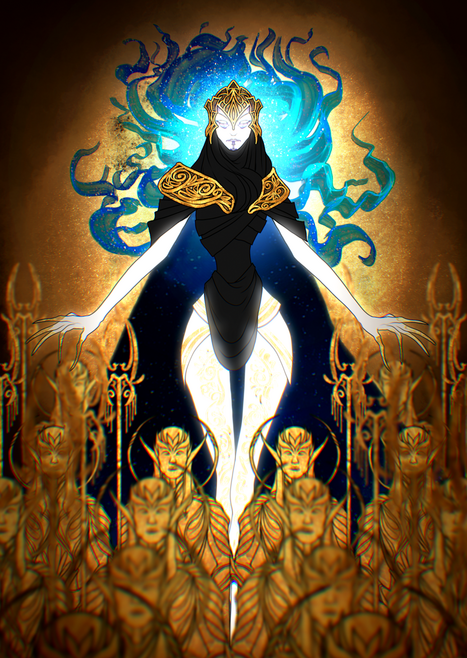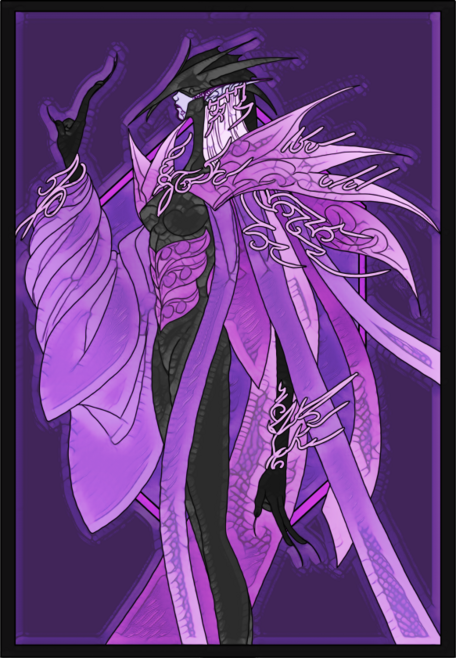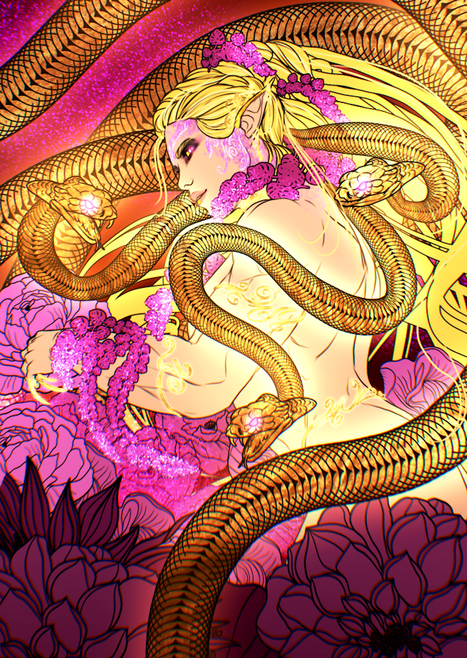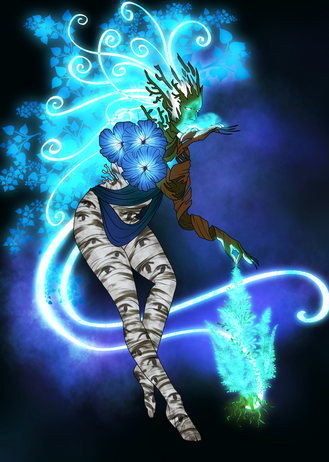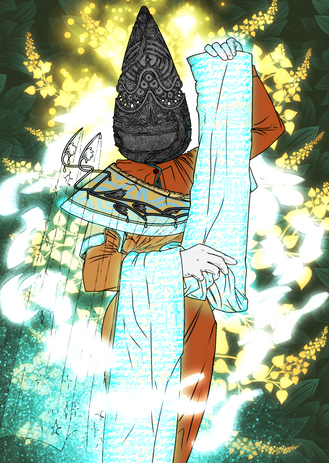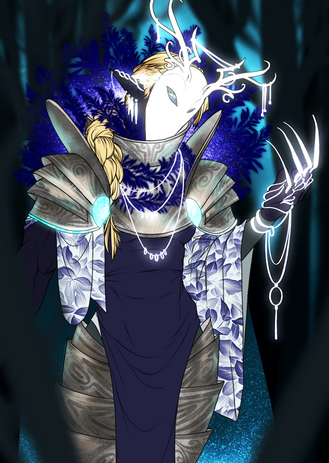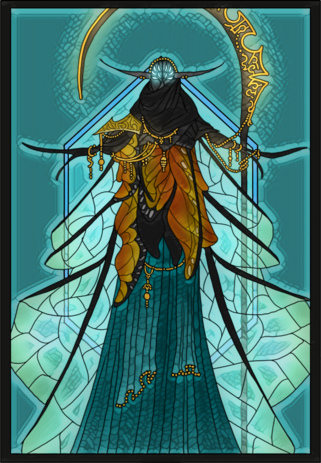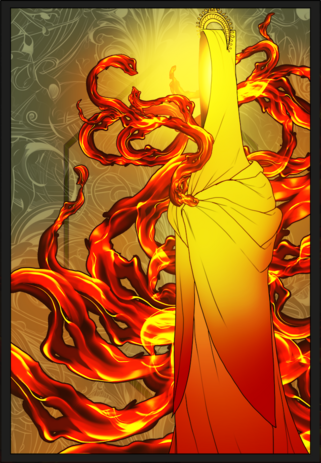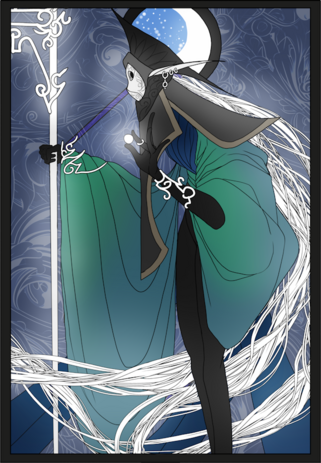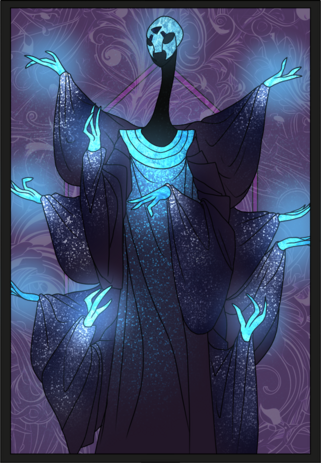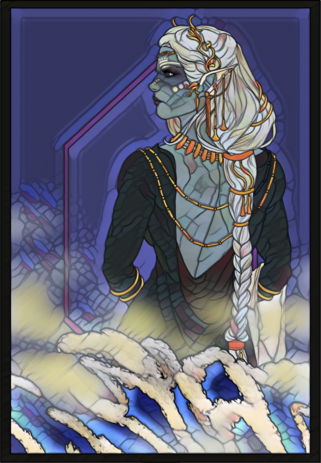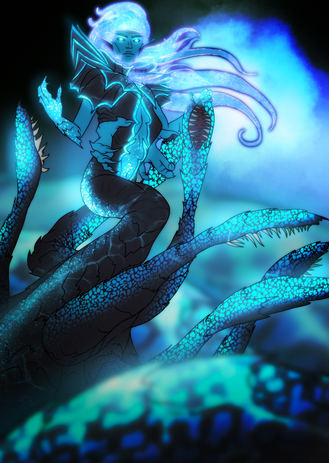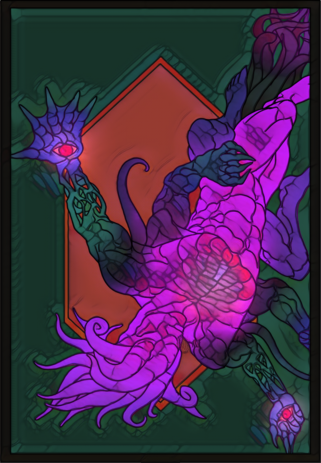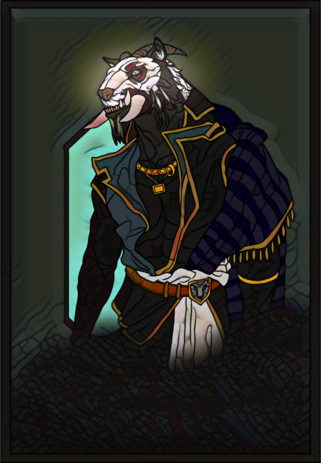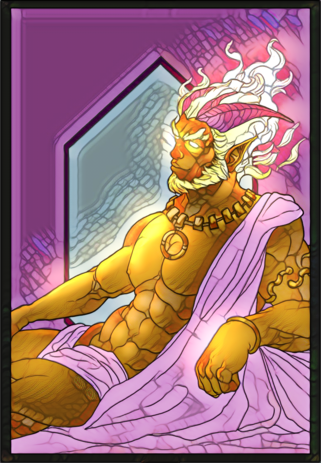More actions
No edit summary |
No edit summary |
||
| Line 23: | Line 23: | ||
File:Saphori.png|''Sapphora, Empress of Love.'' | File:Saphori.png|''Sapphora, Empress of Love.'' | ||
</gallery> | </gallery> | ||
* ''' | * '''Cemaan''' (pronounced say-maan) is the Empress Goddess of power and domination. She represents the will for increased fame, increased influence, and increased legacy. She embodies the perfection of fame, that her followers should not disappear into the crowd, to be forgotten by the world. She is one of the Triarchy Empresses, and thus immensely powerful, but has largely been subdued by the power and influence of Talea who effectively rules the pantheon alone, even if the Empresses are equal. | ||
* ''' | * '''Talea''' (pronounced ta-leya) is the Empress Goddess of war and conquest. She represents the will of nationhood to expand, she represents the inner desire for societies to clash and establish the better and the elder. She embodies the perfection of conflict, that her followers are able to defend themselves and better yet, subjugate others by force of arms whether it be weapons or magical. She is one of the Triarchy Empresses, and even though they should rule the Pantheon, Talea rules alone. | ||
* ''' | * '''Sapphora''' (pronounced sa-fo-ra) is the Empress Goddess of love and passion. She represents the will to be desired and adored by others, to be seen truly and to be loved truly. She embodies the perfection of beauty and desirability, that her followers should always seek ways to both mentally and physically please others in appearance and presentation, and thus spread influence through conquest of the heart. She is one of the Triarchy Empresses, which in theory rules together, but Sapphora does not. | ||
===The Ordained=== | ===The Ordained=== | ||
<gallery mode="packed-overlay" widths="220px" heights="309px"> | <gallery mode="packed-overlay" widths="220px" heights="309px"> | ||
File:Iiiiiiiiiiii.png|''Mana, Goddess of | File:Iiiiiiiiiiii.png|''Mana, Goddess of Natural Kindness.'' | ||
File:Aisheiah.png|''Aseia, God of Knowledge and Magic.'' | File:Aisheiah.png|''Aseia, God of Knowledge and Magic.'' | ||
File:Artareill.png|''Artarel, Goddess of Law and | File:Artareill.png|''Artarel, Goddess of Law and Justice.'' | ||
File:Ammuloa.png|''Ammuloa, God of the Deathwill'' | File:Ammuloa.png|''Ammuloa, God of the Deathwill'' | ||
File:Avinloo.png|''Avinla, Goddess of the Lifespark'' | File:Avinloo.png|''Avinla, Goddess of the Lifespark'' | ||
Revision as of 04:24, 12 July 2024
| Estelley | |
|---|---|
 | |
| Religion | |
| Pronunciation | Es-te-ley |
| Origins | Presumed roughly 15,000 years ago. |
| Deities | |
| Three greater Gods, 5 Gods, 5 optional Gods. | |
Origins
Core Beliefs
Central Message
Perfected Will
The Afterlife
The Ruindawn
Gods and Goddesses
Estelley as a Religion has one unified Pantheon, but not all Gods are treated equal. At the head of the Pantheon are the three Empresses, of which there have only ever been three, and there will always be three. Then come the Ordained, which are Gods that either joined willingly or were conquered during the Ruindawn. Finally, there are the Vowed which similarly joined willingly or were conquered, but who are not considered unquestioningly loyal to the Empresses. As a result, while worshiping the Empresses and the Ordained is mandatory for the religion, worshiping the Vowed is optional. One can worship a single Vowed God, a few, or none at all, it all depends on the person's personal preferences. Note, because a lot of art on this page is still in development, old placeholders are put in place. Do not for the time being refer to these old images for aesthetic inspiration (the temporary images have black borders).
The Empresses
- Cemaan (pronounced say-maan) is the Empress Goddess of power and domination. She represents the will for increased fame, increased influence, and increased legacy. She embodies the perfection of fame, that her followers should not disappear into the crowd, to be forgotten by the world. She is one of the Triarchy Empresses, and thus immensely powerful, but has largely been subdued by the power and influence of Talea who effectively rules the pantheon alone, even if the Empresses are equal.
- Talea (pronounced ta-leya) is the Empress Goddess of war and conquest. She represents the will of nationhood to expand, she represents the inner desire for societies to clash and establish the better and the elder. She embodies the perfection of conflict, that her followers are able to defend themselves and better yet, subjugate others by force of arms whether it be weapons or magical. She is one of the Triarchy Empresses, and even though they should rule the Pantheon, Talea rules alone.
- Sapphora (pronounced sa-fo-ra) is the Empress Goddess of love and passion. She represents the will to be desired and adored by others, to be seen truly and to be loved truly. She embodies the perfection of beauty and desirability, that her followers should always seek ways to both mentally and physically please others in appearance and presentation, and thus spread influence through conquest of the heart. She is one of the Triarchy Empresses, which in theory rules together, but Sapphora does not.
The Ordained
- Bard (pronounced Bard) is the god of justice and leader of the Eili. As god of justice, he is responsible for the sense of fairness and the rule of law among the faithful, he also acts as divine judge for those who have transgressed and puts curses on those who require punishment. Bard together with Helskorn is responsible for the Svartskra, demanding the Eili and Vola Gods disavow each other, and refrain from interacting. He is prayed to, to wish for justice in troubled times, and for clarity to those in power.
- Tadhg (pronounced ty-g) is the god of life and death and the demon-ward Eili. An afterlife God, he holds the mirror to the dimensions and guides the burial rites of the dead. When summer comes heralding the burial of the dead in thawing helbolwen he becomes a formless levitating robe with frozen hands to show the mirror. When winter comes heralding the torment of Demons he becomes an Urlan and protects the faithful from their wicked schemes, while the dead lie embalmed for the next summer to be buried.
- Leif (pronounced lay-f) is the God of love and change. He teaches the faithful to be kind and affectionate, to show passion to loved ones and care for the needy. He is the patron of parents and caretakers, and depicted with blazing chains as he drags the sun through the sky with the moon following in tow, tied to the sun by a chain of stars. Leif is prayed to for goodwill from others and kindness in one's own heart. He is also conventionally seen as the God of fire and symbolized by this primal element.
- Tadhg (pronounced ty-g) is the god of life and death and the demon-ward Eili. An afterlife God, he holds the mirror to the dimensions and guides the burial rites of the dead. When summer comes heralding the burial of the dead in thawing helbolwen he becomes a formless levitating robe with frozen hands to show the mirror. When winter comes heralding the torment of Demons he becomes an Urlan and protects the faithful from their wicked schemes, while the dead lie embalmed for the next summer to be buried.
- Leif (pronounced lay-f) is the God of love and change. He teaches the faithful to be kind and affectionate, to show passion to loved ones and care for the needy. He is the patron of parents and caretakers, and depicted with blazing chains as he drags the sun through the sky with the moon following in tow, tied to the sun by a chain of stars. Leif is prayed to for goodwill from others and kindness in one's own heart. He is also conventionally seen as the God of fire and symbolized by this primal element.
- Leif (pronounced lay-f) is the God of love and change. He teaches the faithful to be kind and affectionate, to show passion to loved ones and care for the needy. He is the patron of parents and caretakers, and depicted with blazing chains as he drags the sun through the sky with the moon following in tow, tied to the sun by a chain of stars. Leif is prayed to for goodwill from others and kindness in one's own heart. He is also conventionally seen as the God of fire and symbolized by this primal element.
The Vowed
- Bard (pronounced Bard) is the god of justice and leader of the Eili. As god of justice, he is responsible for the sense of fairness and the rule of law among the faithful, he also acts as divine judge for those who have transgressed and puts curses on those who require punishment. Bard together with Helskorn is responsible for the Svartskra, demanding the Eili and Vola Gods disavow each other, and refrain from interacting. He is prayed to, to wish for justice in troubled times, and for clarity to those in power.
- Tadhg (pronounced ty-g) is the god of life and death and the demon-ward Eili. An afterlife God, he holds the mirror to the dimensions and guides the burial rites of the dead. When summer comes heralding the burial of the dead in thawing helbolwen he becomes a formless levitating robe with frozen hands to show the mirror. When winter comes heralding the torment of Demons he becomes an Urlan and protects the faithful from their wicked schemes, while the dead lie embalmed for the next summer to be buried.
- Leif (pronounced lay-f) is the God of love and change. He teaches the faithful to be kind and affectionate, to show passion to loved ones and care for the needy. He is the patron of parents and caretakers, and depicted with blazing chains as he drags the sun through the sky with the moon following in tow, tied to the sun by a chain of stars. Leif is prayed to for goodwill from others and kindness in one's own heart. He is also conventionally seen as the God of fire and symbolized by this primal element.
- Tadhg (pronounced ty-g) is the god of life and death and the demon-ward Eili. An afterlife God, he holds the mirror to the dimensions and guides the burial rites of the dead. When summer comes heralding the burial of the dead in thawing helbolwen he becomes a formless levitating robe with frozen hands to show the mirror. When winter comes heralding the torment of Demons he becomes an Urlan and protects the faithful from their wicked schemes, while the dead lie embalmed for the next summer to be buried.
- Leif (pronounced lay-f) is the God of love and change. He teaches the faithful to be kind and affectionate, to show passion to loved ones and care for the needy. He is the patron of parents and caretakers, and depicted with blazing chains as he drags the sun through the sky with the moon following in tow, tied to the sun by a chain of stars. Leif is prayed to for goodwill from others and kindness in one's own heart. He is also conventionally seen as the God of fire and symbolized by this primal element.
| ||||||||||
| Accreditation | |||||||||
|---|---|---|---|---|---|---|---|---|---|
|
| ||||||||
